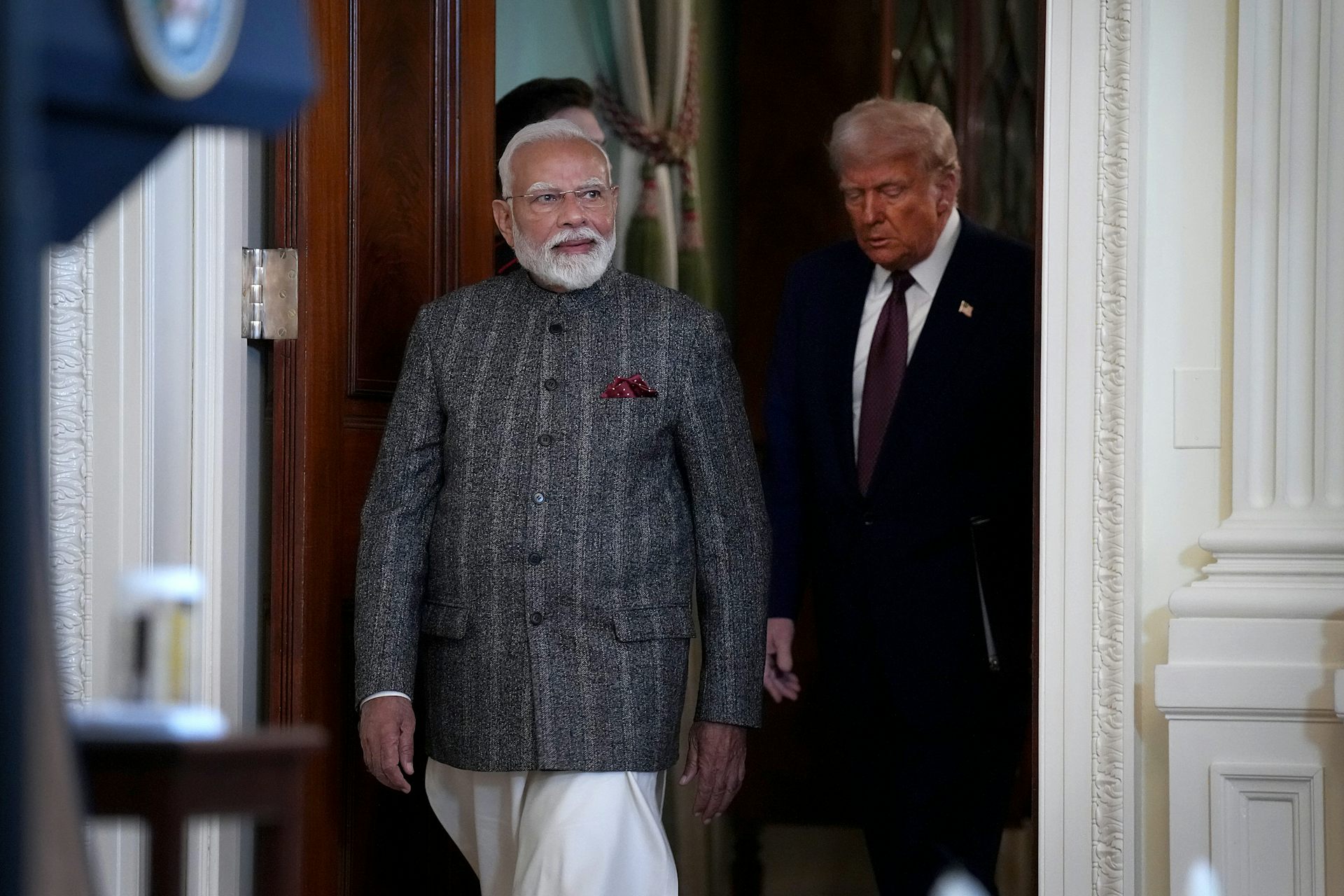Sonic attacks: How a medical mystery can sow distrust in foreign governments
A mystery disease that struck US personnel in Cuba and China triggered fears of a sonic weapon. But two experts argue that this is just about leveraging a medical mystery for political gain.

The recent evacuation of a group of U.S. diplomatic personnel stationed in Guangzhou, China, revived concerns over an “attack” that originated in Havana in mid-2016. At that time, several U.S. individuals working at the American Embassy in Cuba became ill after hearing sounds in their residences similar to cicadas or being in a car with the windows rolled down. The bizarre noises were accompanied by dizziness, headaches, hearing problems, visual focusing issues and cognitive impairments such as memory loss and difficulty concentrating on their daily routines.
After the initial episode in Cuba, the U.S. Department of State, fearing that its personnel had been victims of some kind of “sonic attack,” sent the approximately 80 embassy employees for evaluation to the University of Miami. After the initial examinations, 24 were referred to the University of Pennsylvania Center for Brain Injury for further assessment. The symptoms related to the auditory functions were suspected to be the consequence of neurological damage. The Guangzhou-based Americans were also referred to this same center.
Around the same time as the Americans sought help, Canadian diplomats reporting similar symptoms also requested medical attention at their embassy in Cuba. The Canadian authorities did not immediately characterize the events as “attacks” or warn their citizens about traveling to Cuba. But in April 2018, the Canadian government ordered their diplomatic personnel stationed in Cuba to leave their families at home. A similar policy for diplomats’ families applies to service in Afghanistan and other countries classified as highly dangerous.
We study ethical, legal and political issues in medicine in Asia, Europe and Latin America and have followed the mystery of these “sonic attacks” closely. Based on our research, we recognize this incident as another example of a mysterious disease used to stir tensions between countries.
‘Concussion without concussion’
During their examinations, the Penn physicians found that those evacuated from Cuba had symptoms consistent with a mild cranial trauma or a “brain concussion.” In the words of one of the Penn physicians, Douglas Smith, “This is really concussion without concussion.” In a paper published in March 2018 in the Journal of the American Medical Association, the Penn physicians downplayed hypotheses that the symptoms were caused by a poison or were the results of mass hysteria.
They left open the possibility that some new and previously unknown weapon may have targeted the affected individuals and caused this unexpected collection of symptoms. An editorial in JAMA that accompanied the Penn authors’ paper was more skeptical. The Trump administration’s statements have been unhelpful at best, and the FBI’s investigators have questioned the notion of “sonic attacks” and think the injuries were induced by a virus, though none were detected in the examinations conducted by the Miami or Penn physicians. And that was before the reports from China.
A joint technical report in March 2018 from the University of Michigan Computer Science and Engineering Department and the Zhejiang University Department of Science and Engineering reported that they had “reverse engineered” the odd sounds described by the U.S. personnel. The engineers experimented with several ultrasound devices that produced ultrasonic signals at different frequencies – signals that interfered with each other and could have produced the sounds associated with the symptoms experienced by the U.S. personnel.

Were the embassy personnel and their families the unintended victims of eavesdropping artifacts? The engineers’ report doesn’t conclude that the attack was deliberate, but it is no secret that embassy personnel with sensitive jobs are targets of routine eavesdropping. In this case, the injurious results could have been accidental even if the spying was deliberate, with one spy agency unaware of what the other was doing, resulting in the sonic wave crossovers that the engineers were able to reproduce.
Medical mysteries and political conflict
These anomalous medical symptoms occurred in countries that continue to have a contentious relationship with the United States. Further ambiguities arise because these unexplained maladies require assessment by experts from different disciplines, which generates varied viewpoints. The ambiguous nature of the symptoms can result in findings that are inconclusive – sparking distrust between all the parties.
Not surprisingly, the Cuban government dismissed allegations that these incidents involved deliberate attacks, noting the lack of scientific evidence of such actions. Through Granma, a Cuban newspaper (all newspapers circulating in Cuba are official organs of the Cuban government), the Cuban government accused the U.S. administration of using these alleged incidents as an excuse not to comply with a previous agreements that would allow 20,000 immigrant visas annually for Cubans willing to live in the U.S., reversing the approach initiated by the Obama administration. Chinese officials have said that they will respect their treaty obligations to protect diplomats if the United States requests their assistance.
All this takes place when international relations are in a delicate state. The allegations of “sonic attacks” on U.S. personnel in Cuba and now China present a perfect opportunity for governments to inflate unsubstantiated hypotheses to further their own political goals.
Public health and propaganda
Leaders have long been willing to exploit suspicions of dishonorable war mongering, especially when it was indeed possible that their adversaries were using biological tactics to harm national interests and undermine morale. Historically the principal examples were biological agents, often through crude means. George Washington suspected the British of unleashing smallpox on Boston during the Revolutionary War, helping to justify mass inoculation of his troops and fanning contempt for the crown.
During the Korean War, the Communist Chinese leaders Mao Zedong and Zhou Enlai charged that the United States dropped bombs with fleas infected with Pasteurella pestis, the bacteria that transmit the bubonic plague.
Because the actual causes and sources of such alleged attacks are unclear and trigger fear and stigma, it is easy to use the threat of pandemic diseases and biowarfare as propaganda against enemies. In the 1980s, Soviet sources claimed that the HIV/AIDS epidemic was a CIA plot. Fidel Castro also blamed the CIA when, in 1981, an outbreak of hemorrhagic dengue in Cuba affected more than 30,000 individuals and killed about 150 people, mostly children.
Even under the best of circumstances governments may manipulate public perceptions of threats. But in the current political environment, with an administration that has shown disdain for science and the scientific method, leaving key science adviser positions unfilled – and a president who once described climate change as a Chinese hoax and vaccination as causing autism – the American public should be wary of what this administration says about these incidents, who perpetrated them, and why.
Sergio Litewka received funding from Fogarty International Center; U.S. National Institutes of Health( FIC NIH )( 2008-2014) and from the U.S. Office of Research Integrity ( 2016-2017)
Jonathan D Moreno does not work for, consult, own shares in or receive funding from any company or organization that would benefit from this article, and has disclosed no relevant affiliations beyond their academic appointment.
Read These Next
Miami’s new mayor faces a housing affordability crisis, city charter reform and a shrinking budget
Eileen Higgins won a hard-fought election to become Miami’s new mayor. Now for the hard part – governing…
Understanding climate change in America: Skepticism, dogmatism and personal experience
Real skeptics study the evidence and ask questions, rather than taking political dogma on faith. Experiencing…
What are gas stove manufacturers trying to hide? Warning labels
The gas industry is opposed to labels that warn consumers of the potential harms of gas stoves.






